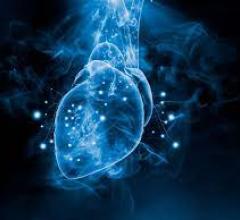
June 27, 2018 – A recent study conducted with the Minneapolis Heart Institute found that Bay Labs’ EchoMD AutoEF deep learning software has less variability in evaluating left ventricular ejection fraction (EF) than the average variability of cardiologists reported in literature. Results of the study were presented at the 2018 American Society of Echocardiography (ASE) Annual Scientific Sessions, June 22-26 in Nashville.
Literature shows that the average variability of cardiologist readers using the Simpson’s biplane method in estimating EF is 9.2 percent. The observed variability of EchoMD AutoEF was superior at 8.29 percent (p = 0.002). The study also demonstrated that EchoMD AutoEF is an accurate and fully automated method of calculating EF from complete echocardiographic patient studies without user intervention. In addition to normal patients, it performed well on obese patients, and on patients with a range of normal and abnormal EF.
“Historically there have been challenges with variability and reproducibility in reporting of the ejection fraction, especially when the EF is not normal; our study showed that the EchoMD AutoEF algorithms can aid interpretation enormously and have less variability than cardiologists reported in literature,” said Richard Bae, M.D., FACC, director of the Echocardiography Laboratory at the Minneapolis Heart Institute and co-author of the study. “By supporting fast, efficient and accurate AI [artificial intelligence]-assisted echocardiogram analysis, the algorithms can allow physicians to focus on putting results into context for the patient — guiding prognosis and course of management.”
The study included 405 echocardiographic patient studies from Minneapolis Heart Institute representing a wide range of body mass index, EF values and of ultrasound systems. For each patient study, the Bay Labs’ software automatically selected optimal apical four-chamber and apical two-chamber digital video clips and used them to perform an EF calculation. These calculations were compared to the standard Simpson’s biplane method.
For more information: www.baylabs.io


 June 12, 2024
June 12, 2024 









